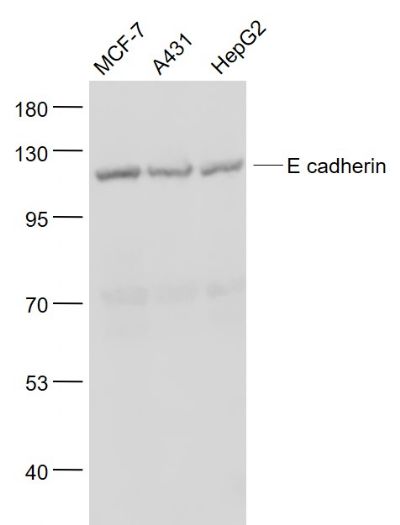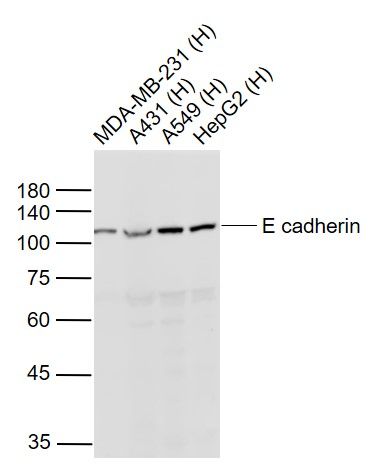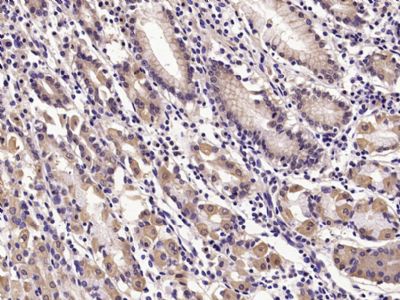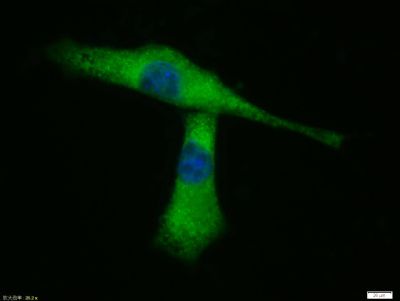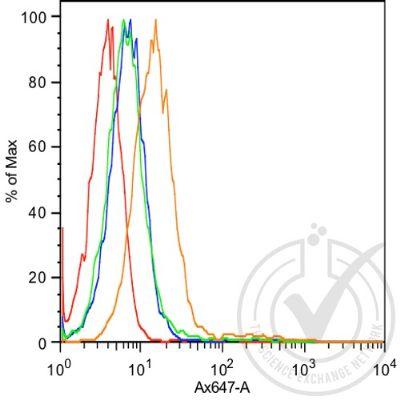[IF=2.344] Zhu, Ting. et al. Irisin/FNDC5 inhibits the epithelial–mesenchymal transition of epithelial ovarian cancer cells via the PI3K/Akt pathway. Arch Gynecol Obstet. 2022 Feb;:1-10 WB ; Human.
[IF=6.543] Yang Lili. et al. Elucidating the Novel Mechanism of Ligustrazine in Preventing Postoperative Peritoneal Adhesion Formation. Oxid Med Cell Longev. 2022;2022:9226022 WB,IF ; Rat,Human.
[IF=5.81] Zhou Z. et al. Vanillin Derivatives Reverse Fusobacterium nucleatum-Induced Proliferation and Migration of Colorectal Cancer Through E-Cadherin/β-Catenin Pathway.. Front Pharmacol. 2022 Mar;13:841918-841918 WB ; Human.
[IF=4.784] Zheng Wu. et al. FOXD3 suppresses epithelial–mesenchymal transition through direct transcriptional promotion of SMAD7 in esophageal squamous cell carcinoma. 2021 Sep 22 WB ; human.
[IF=3.481] Jinzhu Han. et al. Circ_0027599 elevates RUNX1 expression via sponging miR-21-5p on gastric cancer progression. 2021 May 25 WB ; Human.
[IF=4.175] Junmin Li. et al. Circ_ZFR contributes to the paclitaxel resistance and progression of non-small cell lung cancer by upregulating KPNA4 through sponging miR-195-5p. Cancer Cell Int. 2021 Dec;21(1):1-15 WB ;
[IF=6.491] Nikhil K et al.
Identification of LIMK2 as a Therapeutic Target in Castration Resistant Prostate Cancer. Cancer Lett. 2019 Apr 28;448:182-196. WB&IHC ; Mouse.
[IF=3.333] Liu SQ et al. Sphingosine kinase 1 promotes the metastasis of colorectal cancer by inducing the epithelial‑mesenchymal transition mediated by the FAK/AKT/MMPs axis.Int. J. Oncol. 2018 Oct 25 IHC ; Human.
[IF=2.15] Fan, Hai-Xia, et al. "Sonic hedgehog signaling may promote invasion and metastasis of oral squamous cell carcinoma by activating MMP-9 and E-cadherin expression." Medical Oncology 31.7 (2014): 1-8. IHSLCP ; Human.
[IF=1.61] Yu, Yang, et al. "RNA interference-mediated knockdown of Notch-1 inhibits migration and invasion, down-regulates matrix metalloproteinases and suppresses NF-κB signaling pathway in trophoblast cells." Acta Histochemica (2014). WB ; Human.
[IF=6.244] Pei Dai. et al. Gimap5 Inhibits Lung Cancer Growth by Interacting With M6PR. Front Oncol. 2021; 11: 699847 WB ; Human.
[IF=11.161] Zhipeng Jiang. et al. EIF4A3-induced circ_0084615 contributes to the progression of colorectal cancer via miR-599/ONECUT2 pathway. J Exp Clin Canc Res. 2021 Dec;40(1):1-15 WB,IHC ; Human.
[IF=4.175] Huajun Wang. et al. LncRNA NEAT1 promotes proliferation, migration, invasion and epithelial-mesenchymal transition process in TGF-β2-stimulated lens epithelial cells through regulating the miR-486-5p/SMAD4 axis. Cancer Cell Int. 2020 Dec;20(1):1-12 WB ; Human.
[IF=1.977] Qinhong Xu. et al. Overexpression of circ_0001445 decelerates hepatocellular carcinoma progression by regulating miR-942-5p/ALX4 axis. Biotechnol Lett. 2020 Dec;42(12):2735-2747 WB ; Human.
[IF=3.405] Wu Y et al. MFAP5 promotes basal-like breast cancer progression by activating the EMT program.Cell Biosci. 2019 Mar 7;9:24. WB ; Human.
[IF=3.7] Wang et al. Expression and clinical significance of autophagic protein LC3B and EMT markers in gastric cancer. (2018) Cancer.Manag.Res. 10:1479-1486 IHC ; Human.
